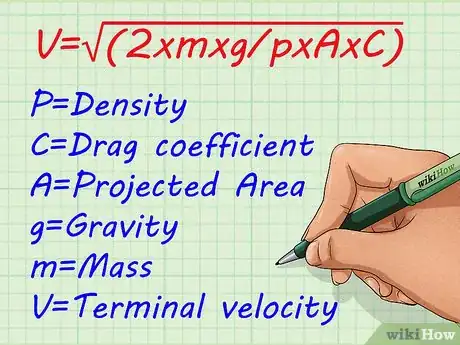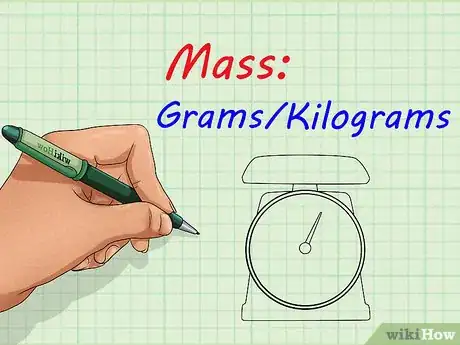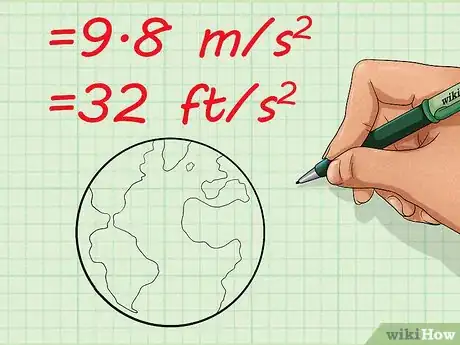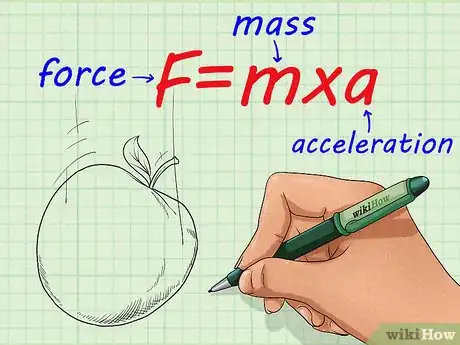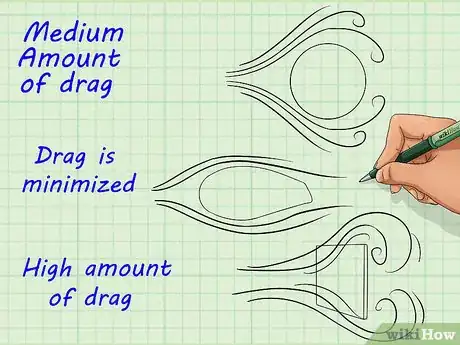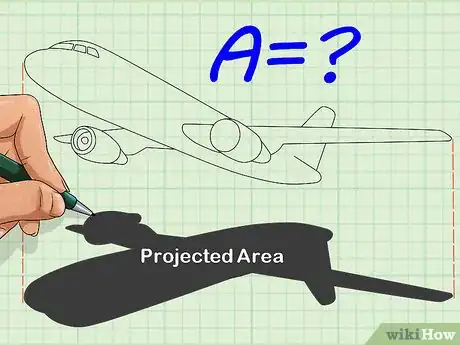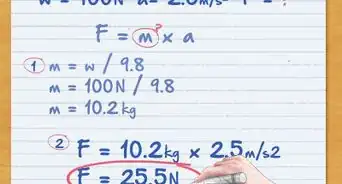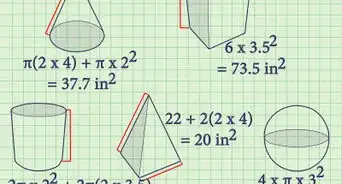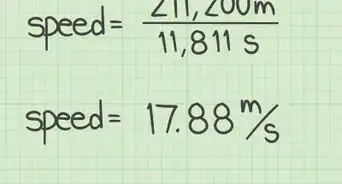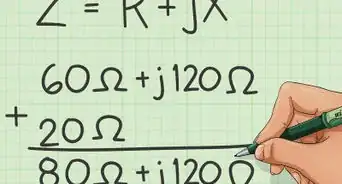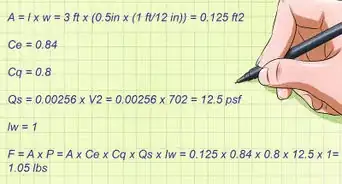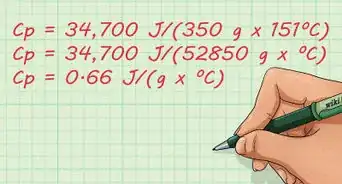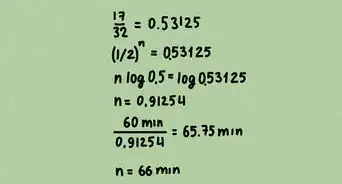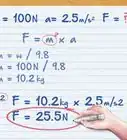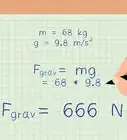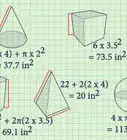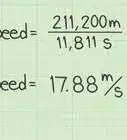This article was co-authored by Sean Alexander, MS. Sean Alexander is an Academic Tutor specializing in teaching mathematics and physics. Sean is the Owner of Alexander Tutoring, an academic tutoring business that provides personalized studying sessions focused on mathematics and physics. With over 15 years of experience, Sean has worked as a physics and math instructor and tutor for Stanford University, San Francisco State University, and Stanbridge Academy. He holds a BS in Physics from the University of California, Santa Barbara and an MS in Theoretical Physics from San Francisco State University.
There are 10 references cited in this article, which can be found at the bottom of the page.
This article has been viewed 641,267 times.
Ever wonder why skydivers eventually reach a maximum speed when falling, even though the force of gravity in a vacuum will cause an object to continually accelerate? A falling object will reach a constant speed when there is a restraining force, such as drag from the air. The force applied by gravity near to a massive body is mostly constant, but forces like air resistance increase the faster the falling object goes. If allowed to free fall for long enough, a falling object will reach a speed where the force of the drag will become equal the force of gravity, and the two will cancel each other out, causing the object to fall at that same speed until it hits the ground. This is called terminal velocity.
Steps
Find the Gravitational Force
-
1Find the mass of the falling object. This should be measured in grams or kilograms, in the metric system.[3]
- If you are using the imperial system, remember that pounds is not actually a unit of mass, but of force. The unit of mass in the imperial system is the pound-mass (lbm), which under the gravitational force on the surface of the earth would experience a force of 32 pound-force (lbf). For example, if a person weighs 160 pounds on earth, that person is actually feeling 160 lbf, but their mass is 5 lbm.
-
2
-
3Calculate the downward pull of gravity. The force with which the falling object is being pulled down equals the object's mass times acceleration due to gravity, or F = MA. This number, multiplied by two, goes in the top of the terminal velocity formula.[6]
- In the imperial system, this is the lbf of the object, the number that is commonly called weight. It is more properly the mass in lbm times 32 feet per second squared. In the metric system, the force is the mass in grams times 9.8 meters per second squared.
Determine the Drag Force
-
1Get the density of the medium. For an object falling through the Earth's atmosphere, the density is going to change based on the altitude and the temperature of the air. This makes calculating terminal velocity of a falling object especially difficult, as the density of the air will change as the object loses altitude. However, you can look up approximate air densities in textbooks and other references.[7]
- As a rough guide, the density of air at sea level when the temperature is 15 °C is 1.225 kg/m3.
-
2Estimate the drag coefficient of the object. This number is based on how streamlined the object is. Unfortunately it is a very complex number to compute, and involves making certain scientific assumptions. Do not attempt to calculate drag coefficient yourself without the help of a wind tunnel and some serious aerodynamic math. Instead look up an approximation based on a similarly shaped object.[8]
-
3Calculate the projected area of the object. The last variable you need to know is the sectional area being presented by the object to the medium. Imagine the silhouette of the falling object seeing when looking up from directly beneath it. That shape, projected onto a plane, is the projected area. Again, this is a difficult value to calculate with anything but simple geometric objects.[9]
-
4Figure out the drag force that is opposing the downward pull of gravity. If you know the velocity of the object, but not the drag force, you can use the formula to calculate the drag force.[10] This is (C*ρ*A*(v^2))/2.
Community Q&A
-
QuestionIf the drop is falling freely with the terminal velocity, then what will happen?
 Community AnswerIt will continue to fall at that speed without accelerating until it hits something.
Community AnswerIt will continue to fall at that speed without accelerating until it hits something. -
QuestionWhat is base jumping?
 Community AnswerB.A.S.E is an acronym for Buildings, Antennas, Spans, and Earth. BASE jumping is an extreme sport in which you jump off these various forms and deploy a small parachute.
Community AnswerB.A.S.E is an acronym for Buildings, Antennas, Spans, and Earth. BASE jumping is an extreme sport in which you jump off these various forms and deploy a small parachute. -
QuestionWhat speed is terminal velocity?
 Ben HalfordCommunity AnswerDepends on the weight, shape, and density of the air. Hence, you have a way to calculate it, as it is not a constant.
Ben HalfordCommunity AnswerDepends on the weight, shape, and density of the air. Hence, you have a way to calculate it, as it is not a constant.
References
- ↑ https://www.omnicalculator.com/physics/terminal-velocity
- ↑ http://www.engineeringtoolbox.com/drag-coefficient-d_627.html
- ↑ https://www.physicsclassroom.com/class/newtlaws/Lesson-3/Free-Fall-and-Air-Resistance
- ↑ Sean Alexander, MS. Physics Tutor. Expert Interview. 14 May 2020.
- ↑ https://www.physicsclassroom.com/class/1DKin/Lesson-5/Acceleration-of-Gravity
- ↑ http://wwwphy.princeton.edu/~steinh/ph115/Chapter03D.pdf
- ↑ http://wahiduddin.net/calc/density_altitude.htm
- ↑ https://phys.libretexts.org/Courses/Joliet_Junior_College/Physics_201_-_Fall_2019/Book%3A_Physics_(Boundless)/6%3A_Applications_of_Newton/6.07%3A_Drag_Force_and_Terminal_Speed
- ↑ https://www.omnicalculator.com/physics/drag-equation
About This Article
To calculate terminal velocity, start by multiplying the mass of the object by 2. Then, multiply that number by the acceleration of the object due to gravity and write your answer down. Next, multiply the density of the fluid the object is falling through by the projected area of the object. Then, multiply that number by the drag coefficient. Finally, divide your first answer by your second answer and take the square root of that number to find the terminal velocity. To learn how to find gravitational force and drag force, keep reading!
